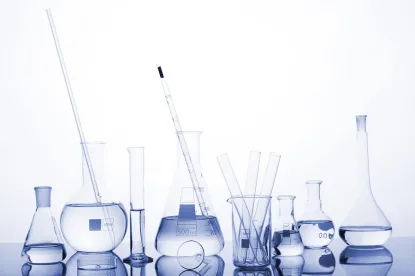A promising new technology may make the diagnosis of cancer and genetic mutation testing as easy as performing a urinalysis as part of an annual physical exam. Cancer could be detected at its earliest stages, when treatment responses would be more favorable and better outcomes more likely.
Scientists at the Translational Genomics Research Institute (TGen), an affiliate of the City of Hope, one of the nation’s elite cancer hospitals in California, have discovered a way to pinpoint early stage cancer by analyzing short strands of small pieces of DNA known as cell-free DNA (cfDNA) in urine. Previously, researchers had believed that DNA fragments in urine were highly degraded and were too short to provide much useful information about cancer. However, the team of researchers, led by Dr. Muhammed Murtaza from TGen and City of Hope, along with other colleagues from Baylor University and Phoenix Children's Hospital, found that the DNA fragments in urine were not random at all and could clearly indicate a difference between healthy individuals and those with cancer.
By examining plasma and urine samples from healthy individuals, children with different cancers, and adults with pancreatic cancer, Dr. Murtaza and his team were able to map DNA fragmentation profiles in urine using whole-genome sequencing. They found that certain regions of the genome were protected from fragmentation in the urine from healthy individuals, whereas these same regions were more fragmented in patients with cancer. The fragmentation profiles in patients with cancer were remarkably similar across multiple individuals; the lengths of the DNA fragments were similar; and the regions of the genome where fragmentation occurred were consistent. Consequently, the researchers were able to determine what types of cells contributed to the DNA fragments.
Dr. Murtaza and his team are well known for pioneering the use of cfDNA in blood from a simple blood draw to detect cancer in what is now known as “liquid biopsy.” Liquid biopsy combined with next generation sequencing (NGS) eliminates the need for an invasive procedure to biopsy surgical tissue for diagnosis and genetic mutation testing in cancer. Most of us are familiar with the concept of biopsy to diagnose cancer. However, diagnoses based on biopsy and pathology are hampered by limitations, such as tumor location or biopsy sample size. On the other hand, liquid biopsy, which uses a blood or fluid sample to test for tumor DNA, either in the form of circulating tumor cells (CTCs) or cfDNA, overcomes many of these limitations. It is less invasive, with faster results for mutation-directed targeted therapy, and it allows physicians to more frequently monitor patients with cancer.
That said, the development of the analysis of cfDNA in urine samples has advantages over liquid biopsy. For liquid biopsy, collection of blood plasma requires venipuncture, and the volume of plasma that can be collected at a single time point is limited. In contrast, urine can be collected noninvasively, outside of a clinical setting, without access to phlebotomists, and is a higher volume source of cancer-derived cfDNA. Although more testing of this urinalysis technology is needed in much larger populations of cancer patients with different cofactors, the early results are promising. In the future, a urine sample may provide an easier, less invasive method of achieving the same results as liquid biopsy.
What are the potential legal implications of analyzing cfDNA in urine samples? There are federal laws that regulate genetic data, including the Health Insurance Portability and Accountability Act (HIPAA) and the Genetic Information Nondiscrimination Act (GINA): they are tailored to the medical, insurance and employment contexts. During recent years, GINA and complementary state laws have mitigated some concerns about genetic discrimination and provided employers and insurers with guidance regarding their legal obligations. However, GINA is not comprehensive enough to eliminate all concerns about genetic data privacy. Similar to liquid biopsy, the analysis of cfDNA in urine and the discovered genetic mutations could provide information of importance in medical malpractice, toxic tort and product liability lawsuits. This information could be used in an attempt to prove or disprove causation in cases involving allegedly harmful exposures. It is important that policymakers, industry and individuals alike appreciate GINA’s limits and the privacy risks involved in using genetic information so that promising new technologies can be implemented sooner rather than later.
Sources
Markus H, Zhao J, Contente-Cuomo T, et al. Analysis of recurrently protected genomic regions in cell-free DNA found in urine. Sci Transl Med. Feb. 17, 2021; 13: Epub.



 />i
/>i


